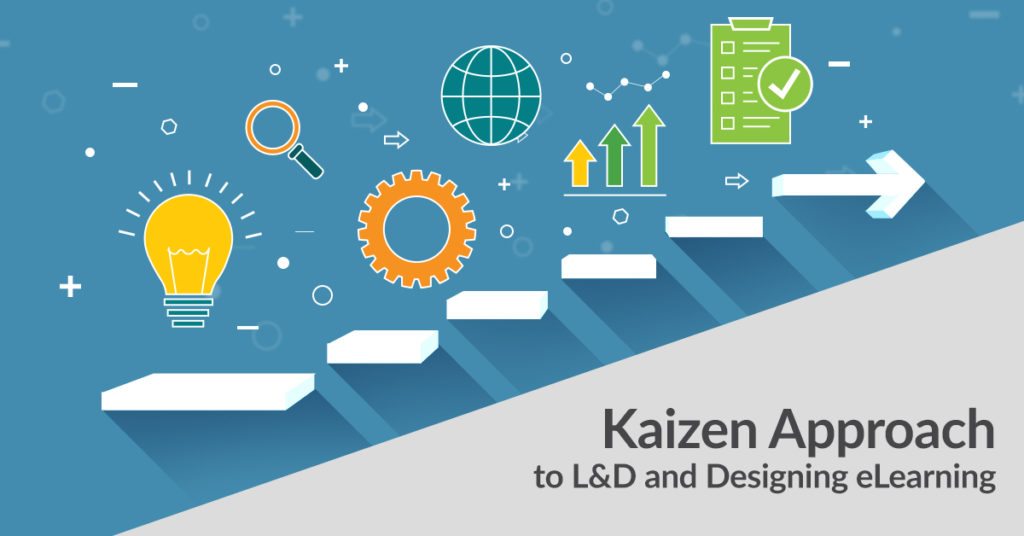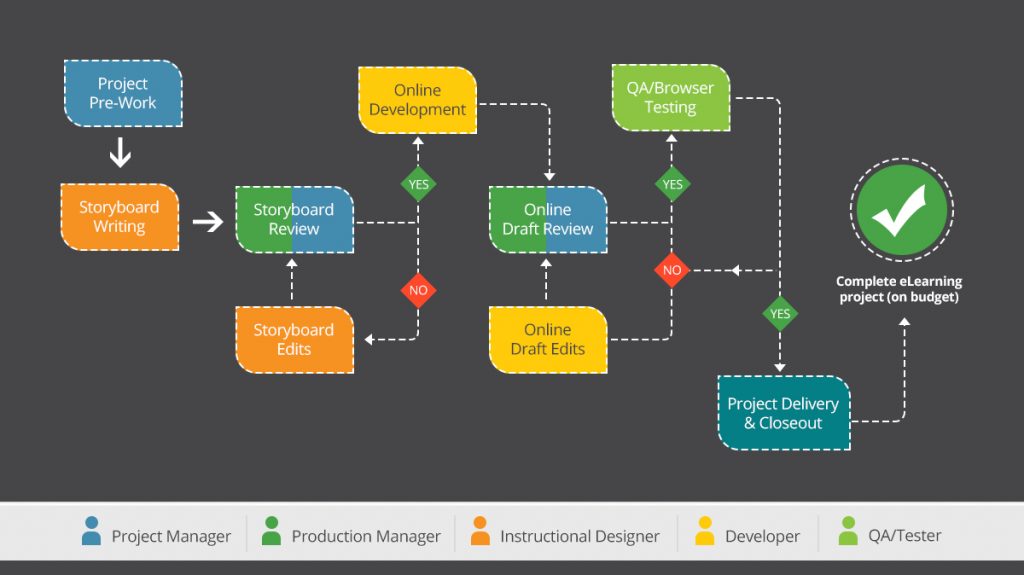Masaaki Imai wrote a popular book titled – “Kaizen: The Key to Japan’s Competitive Success”. This is the first English language book to introduce the concept of Kaizen to the Western world. See this video to learn about Kaizen in the words of the author himself.
The Kaizen Institute website defines Kaizen as – “KAIZEN™ means improvement. Moreover, it means continuing improvement in personal life, home life, social life, and working life. When applied to the workplace KAIZEN™ means continuing improvement involving everyone – managers and workers alike.”

In this blog post, we will examine how L&D teams can learn from Kaizen and how Kaizen as a design philosophy can be used to create better, effective, and engaging eLearning solutions.
Table of Contents
Kaizen – A Japanese Success Story
The Second World War wreaked havoc upon Japan. The atomic bomb that was dropped on Hiroshima and Nagasaki changed the course of the War and how we perceived the use of technology in warfare. The Japanese decided to rebuild their country and economy. There was a focus on becoming self-sufficient and not depending upon the USA or Europe. Brands like Sony and Toyota that are now popular all around the world used this time to consolidate and build products that would have a global appeal. Kaizen played a key role in this success story. Kaizen (改善) comes from two Japanese words: Kai (improvement) and Zen (good), which translates to “continuous improvement”. The Kaizen process is divided into six stages:
- Identifying the problem
- Analyzing the process
- Developing an optimal solution
- Implementing the solution
- Studying the results and taking corrective action
- Standardizing the solution
In the next section, we will examine how Kaizen can be applied by L&D teams.
Kaizen and L&D
A key aspect of Kaizen is devising and implementing optimal solutions for problems identified at the workplace. L&D teams have a similar function, they analyze the learning gaps among employees and coordinate with the relevant project managers to organize role-appropriate training for employees. Kaizen focuses on step-by-step processes to craft solutions for problems. Similarly, L&D teams focus on deploying microlearning programs that focus on specific learning outcomes.
eLearning Design
eLearning design follows a specific pattern. Once a project is commissioned, the project kick-off meeting brings the key stakeholders together and there’s a detailed discussion on how the project will be completed with estimated timelines and effort-mapping. The development of any eLearning course has three distinct phases:
- Content
- Design
- Quality Testing
Each phase has its own set of professionals working on specific tasks to complete the portion of work assigned to them. As Kaizen focuses on finding the optimal solution, eLearning development can be constructed in a way that looks at assigning the right task to the right person/resource. The success of projects is determined by the people who work on them. The project manager/lead thus plays an important role by analyzing the strengths of the people available and assigning them a specific project. Initiating design in sprints is another trend that’s catching up instead of a full-stretch design phase with pre-defined start and end-dates. Here’s a flowchart that describes the eLearning project lifecycle:

As the flowchart indicates – there are clear roles and duties and a defined pattern in which the work needs to be completed. With a Kaizen approach to eLearning design – the focus is on getting work done with the best people, with minimal errors, within the agreed deadline.
At Origin, we have a strong belief that one should not repeat mistakes – making new mistakes is allowed! One learns from the mistakes one has committed once and then ensure that they are not repeated. This is derived learning from ‘Kaizen’. The Quality Team is the core pillar on which the success of organizations is built. We are no different. Kaizen focuses on creating products that are defect-free. When eLearning is created by applying the best practices of Kaizen – we look at creating zero-defect / error-free eLearning that is engaging and result-driven.
Kaizen and Learning Experience Platforms
You may wonder how Kaizen and learning delivery platforms are connected? Traditionally, eLearning has been delivered online via learning management systems. Over the years, eLearning and workplace training has transformed from long template-driven presentations to smaller explainer videos. The ‘attention deficit’ challenge is another problem that L&D teams have to battle. The increasing popularity of smartphones and tablet devices, employees lacking time to learn at the office, and the priority to complete assigned learning programs, have popularized the growth of app-based learning. Kaizen stresses on finding appropriate solutions for problems. One of the challenges that learning across different devices poses; is the tracking of learner analytics. The other issue is the seamless integration of formal and informal learning. Modern LXPs like Origin Fractal LXP bridge these challenges efficiently and offer learners a refreshing new learning experience. Be it a quick employee induction training program or product training for users and channel partners. You can use Origin Fractal LXP to meet both your enterprise training and extended education needs.
For a Kaizen-based eLearning design, which helps you meet your eLearning requirements, or a brand new powerful LXP to power your training delivery, please write to info@originlearning.com. Do you follow a Kaizen-based approach to L&D? Do share your thoughts in the ‘Comments’ section.
